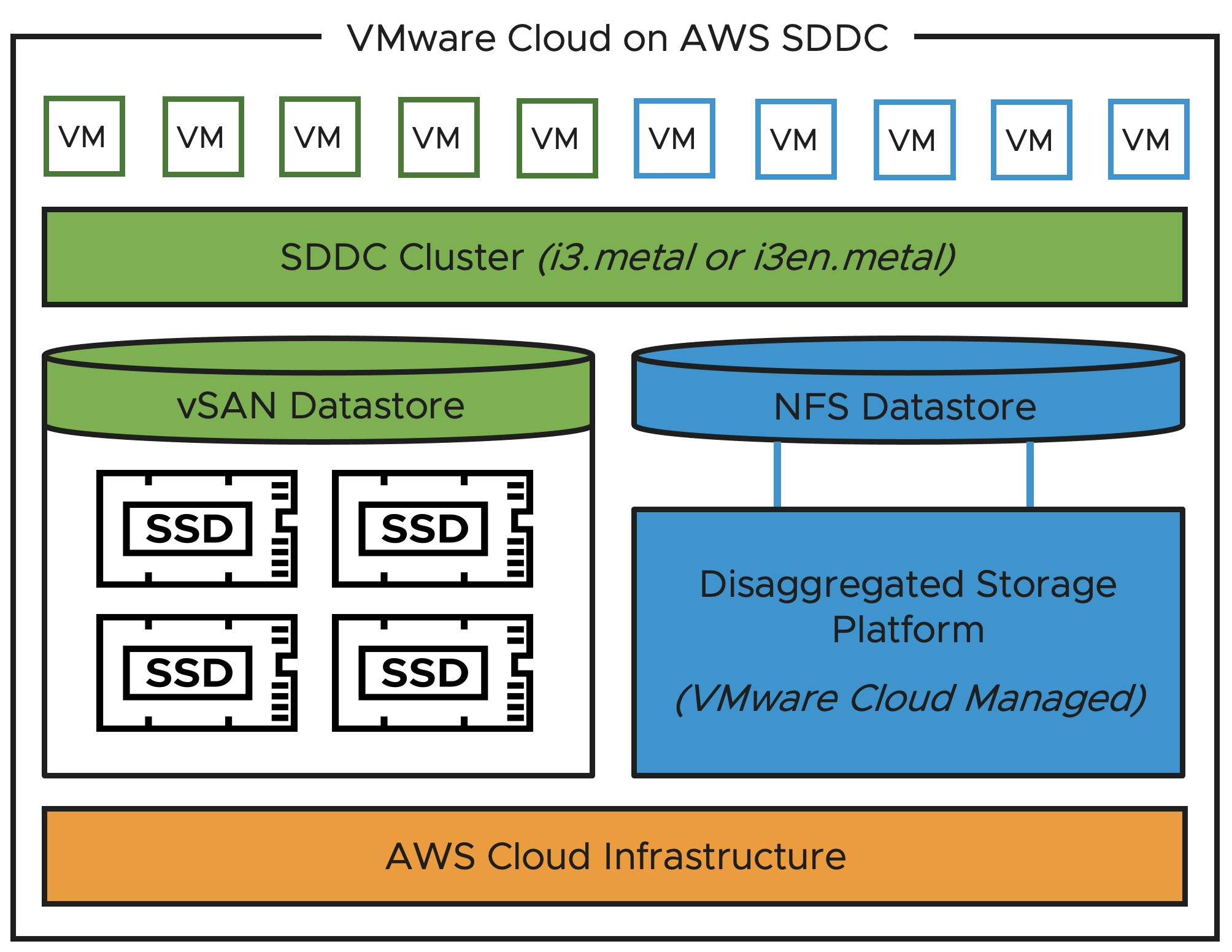- Ignite Innovation Across Industries at Cisco Live 2025
- Dell rolls out private cloud package, bolsters AI offerings for on-prem development
- Samsung will give you a free 27-inch Odyssey G55C monitor - how to qualify
- Critical Zero-Days Found in Versa Networks SD-WAN/SASE Platform
- This $12 gadget tool is a permanent accessory on my keychain - here's why
Introducing VMware Cloud Flex Storage 1.0

The uptake and importance of both cloud and data services has increased significantly over recent years. Since VMware Cloud on AWS was first introduced in 2017, the customer base has followed a similar trajectory, with new use cases being uncovered. As a result, customer expectations have also risen. Consumers now want elastic compute; the ability to scale compute independent of storage, elastic performance; the ability to scale IOPS independent of capacity, and elastic capacity; the ability to scale capacity independent of IOPS.
The very nature of VMware Cloud on AWS Hyper-Converged Infrastructure (HCI) nodes has afforded its users greater consolidation and compression ratios, and more flexibility around virtual machine sizing. The first node type introduced was the i3.metal with around 10.37 TiB raw storage, all based on local host NVMe SSD devices. VMware then experimented with an r5.metal node type, offering elastic vSAN backed by the automatic provisioning and management of AWS EBS volumes. The r5 was decommissioned shortly after, and the i3 node was joined by the i3en.metal. The i3enhanced boasted a more powerful specification, including 45.84 TiB of raw capacity per host.
Whilst the i3en.metal node boosted the available storage capacity, it boosted compute with it. For large environments the power of the i3en node is great, but there was still a gap for those environments which were really heavily skewed in the direction of storage consumption, without the need for matching compute overhead.
Enter VMware Cloud Flex Storage. Announced today, March 29; a fully VMware-managed and integrated cloud storage service for VMware Cloud on AWS.
VMware Cloud Flex Storage provides disaggregated and elastic storage, catering for capacity-heavy workloads and lower performance needs. By augmenting vSAN as supplemental storage, customers can scale out attached storage without the growth in compute capacity.
NFS datastores of up to 400 TB and up to 150K IOPS can be attached to an SDDC cluster, comprising of either i3 or i3en nodes. Multiple datastores can be attached to a cluster, and a datastore can also be shared across clusters, enabling an initial target into the petabytes. As with the vSAN datastore, data is encrypted at rest by default. Customers can choose between a pay-as-you-go consumption model, or an optional subscription term with a minimum capacity buy in.
The traditional block storage used by vSAN in the hyper-converged nodes is designed for latency sensitive applications, it handles random transactional workloads well, and is simple to manage or consume. As outlined above, HCI block storage scales per host, as does the cost.
In the back end, VMware Cloud Flex Storage uses AWS S3 with a VMware-managed front end. Object based storage is typically not for latency sensitive workloads, however the additional architecture built around the file system adds caching and I/O optimisation. The scale out file system itself it built on the same technology as VMware Cloud Disaster Recovery. Object storage is also highly durable, resilient across availability zones, low cost, and allows for more granular scaling of capacity, whilst only paying for consumption.
VMware Cloud Flex Storage mounts directly to the hosts using NFS. Writes are synchronously written to a HA pair of back end nodes, before being moved into thin-provisioned cloud object storage. There are no customer managed VMs, or cloud gateway type connectivity to worry about. Furthermore, existing vCenter and vROps tooling will be able to monitor performance, latency, IOPS, and availability.

Customers can apply for the early access program by emailing vmcfs_ea at vmware.com. Those accepted onto the program will be provided with a VMware Cloud on AWS SDDC with VMware Cloud Flex Storage for testing at no cost. Although there has been no official date published for general availability, more information can be found on todays blog post Announcing Preview of VMware Cloud Flex Storage.

